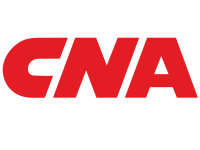
CNA Financial Corp
NYSE:CNA


| US |

|
Johnson & Johnson
NYSE:JNJ
|
Pharmaceuticals
|
| US |

|
Berkshire Hathaway Inc
NYSE:BRK.A
|
Financial Services
|
| US |

|
Bank of America Corp
NYSE:BAC
|
Banking
|
| US |

|
Mastercard Inc
NYSE:MA
|
Technology
|
| US |

|
UnitedHealth Group Inc
NYSE:UNH
|
Health Care
|
| US |

|
Exxon Mobil Corp
NYSE:XOM
|
Energy
|
| US |

|
Pfizer Inc
NYSE:PFE
|
Pharmaceuticals
|
| US |

|
Palantir Technologies Inc
NYSE:PLTR
|
Technology
|
| US |

|
Nike Inc
NYSE:NKE
|
Textiles, Apparel & Luxury Goods
|
| US |

|
Visa Inc
NYSE:V
|
Technology
|
| CN |

|
Alibaba Group Holding Ltd
NYSE:BABA
|
Retail
|
| US |

|
3M Co
NYSE:MMM
|
Industrial Conglomerates
|
| US |

|
JPMorgan Chase & Co
NYSE:JPM
|
Banking
|
| US |

|
Coca-Cola Co
NYSE:KO
|
Beverages
|
| US |

|
Walmart Inc
NYSE:WMT
|
Retail
|
| US |

|
Verizon Communications Inc
NYSE:VZ
|
Telecommunication
|
Utilize notes to systematically review your investment decisions. By reflecting on past outcomes, you can discern effective strategies and identify those that underperformed. This continuous feedback loop enables you to adapt and refine your approach, optimizing for future success.
Each note serves as a learning point, offering insights into your decision-making processes. Over time, you'll accumulate a personalized database of knowledge, enhancing your ability to make informed decisions quickly and effectively.
With a comprehensive record of your investment history at your fingertips, you can compare current opportunities against past experiences. This not only bolsters your confidence but also ensures that each decision is grounded in a well-documented rationale.
Do you really want to delete this note?
This action cannot be undone.

| 52 Week Range |
41.86
51.95
|
| Price Target |
|
We'll email you a reminder when the closing price reaches USD.
Choose the stock you wish to monitor with a price alert.

|
Johnson & Johnson
NYSE:JNJ
|
US |

|
Berkshire Hathaway Inc
NYSE:BRK.A
|
US |

|
Bank of America Corp
NYSE:BAC
|
US |

|
Mastercard Inc
NYSE:MA
|
US |

|
UnitedHealth Group Inc
NYSE:UNH
|
US |

|
Exxon Mobil Corp
NYSE:XOM
|
US |

|
Pfizer Inc
NYSE:PFE
|
US |

|
Palantir Technologies Inc
NYSE:PLTR
|
US |

|
Nike Inc
NYSE:NKE
|
US |

|
Visa Inc
NYSE:V
|
US |

|
Alibaba Group Holding Ltd
NYSE:BABA
|
CN |

|
3M Co
NYSE:MMM
|
US |

|
JPMorgan Chase & Co
NYSE:JPM
|
US |

|
Coca-Cola Co
NYSE:KO
|
US |

|
Walmart Inc
NYSE:WMT
|
US |

|
Verizon Communications Inc
NYSE:VZ
|
US |
This alert will be permanently deleted.
 CNA Financial Corp
CNA Financial Corp
CNA Financial Corp
Investor Relations
CNA Financial Corporation is a venerable institution in the world of insurance, established in the late 19th century, headquartered in the bustling city of Chicago. As one of the largest commercial property and casualty insurance companies in the United States, CNA thrives by specializing in underwriting a diverse array of insurance products tailored primarily for businesses and professionals. Its comprehensive portfolio includes property and casualty insurance, claims management services, and risk management solutions, catering to industries such as construction, healthcare, and technology. The company’s prowess lies in its ability to assess risk comprehensively, using vast data and seasoned expertise to craft policies that protect its clients' assets and mitigate potential liabilities, thus allowing businesses to operate more securely in an uncertain world.
CNA Financial’s revenue model boasts a steady stream from the premiums collected from policyholders, which form the lifeblood of its operations. In addition to these premiums, CNA also profits from prudent investment of the collected funds, a strategy that complements its underwriting income and bolsters its financial strength. The company has cultivated a reputation for judicious risk management and claims handling, ensuring that their claim payout strategy supports long-term profitability. By meticulously balancing its underwriting practices with effective investing and claims management, CNA continues to navigate the complex and ever-evolving insurance landscape, securing its place as a formidable player in the insurance industry.

CNA Financial Corporation is a venerable institution in the world of insurance, established in the late 19th century, headquartered in the bustling city of Chicago. As one of the largest commercial property and casualty insurance companies in the United States, CNA thrives by specializing in underwriting a diverse array of insurance products tailored primarily for businesses and professionals. Its comprehensive portfolio includes property and casualty insurance, claims management services, and risk management solutions, catering to industries such as construction, healthcare, and technology. The company’s prowess lies in its ability to assess risk comprehensively, using vast data and seasoned expertise to craft policies that protect its clients' assets and mitigate potential liabilities, thus allowing businesses to operate more securely in an uncertain world.
CNA Financial’s revenue model boasts a steady stream from the premiums collected from policyholders, which form the lifeblood of its operations. In addition to these premiums, CNA also profits from prudent investment of the collected funds, a strategy that complements its underwriting income and bolsters its financial strength. The company has cultivated a reputation for judicious risk management and claims handling, ensuring that their claim payout strategy supports long-term profitability. By meticulously balancing its underwriting practices with effective investing and claims management, CNA continues to navigate the complex and ever-evolving insurance landscape, securing its place as a formidable player in the insurance industry.





























 You don't have any saved screeners yet
You don't have any saved screeners yet
